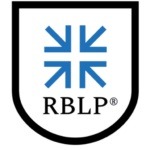Training the Team is a Collective Task You Must Lead
RBLP Staff – Building and Leading Resilient Teams Series
As the team leader, training is one of the most important responsibilities you will have. But training does not live in a vacuum. Training isn’t a once month event that gets planned and scheduled. Rather, you train every day as you build your team.
In the old days – as in anything before 2008 – training happened episodically. Teams often met offsite for a day or two of intensive training on whatever the topic happened to be: meeting deadlines, time management, human resources policies, etc. Frequently, the training was delivered by someone outside the department, or even outside the company.
Just as frequently, once team members were back in the office, the handouts, rules, admonitions, and lectures were stashed by attendees in two circular files: the physical wastebasket, and the one in our heads.
As a leader today, you need to understand that training must be baked into the daily routine. Train as you go, not on someone else’s schedule. That is the way you will build a truly cohesive and resilient team.
But how do you embed training in the daily dash to the project finish line? By viewing every part of the collective work process as both getting the job done, and learning from the doing as a group.
Team training on the job is basically the same as learning on the job, and learning on the job is what keeps your team engaged. Research consistently supports the theory that people who are learning and growing at work are more productive, have higher retention rates, and need less oversight. If you, as the leader, make it a priority to point out to your team what they can learn on the job, you become both leader and teacher.
To extract the learning opportunities, you as the leader must find the time to reflect on the work done as a group. As your team moves through the phases of a project, pause between phases to review what went right, what could have been done better, and what happened during the process that revealed how the team demonstrated its ability to get the work done more efficiently and effectively.
Some leaders like to schedule a process/project review meeting each morning before work begins, at the end of the day, or once a week. That was the impetus behind the tech industry’s daily standing meetings. There’s nothing inherently wrong with that approach, and it does support the idea that training/learning happens in an ongoing manner.
But a scheduled review meeting can quickly become stale and veer off the course of breaking down what the group did.
A better way is to call people together at the end of a collective activity. That way, you emphasize that some By keeping the timing tied to the event, you keep it fresh and safeguard it from turning into something other than a collective learning opportunity.
One very important note: Do not call this process out as training. Workers are too used to thinking about training as something done apart from their daily routine designed to hand them the information they may or may not benefit from.
Instead, position it as “What did we learn today?” If you get the team thinking about the individual contributions to a successful project, you will reinforce that, under your leadership but working together, they are learning, adding new skills, and building a powerful team.

